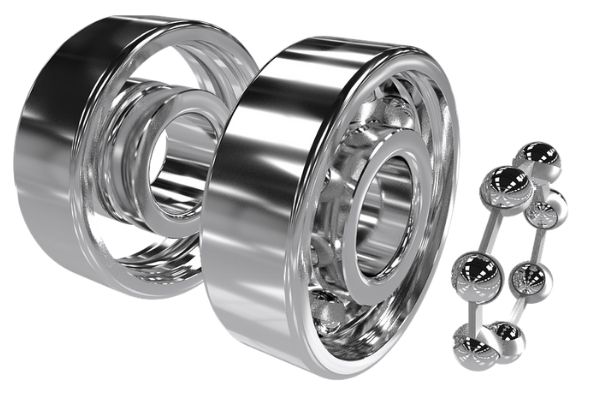1. Introduction to the study of materials. Basic types of materials used by humans during historical development; examples – gradual improvement of individual types of materials. Basic methods of studying the structure of materials and their limits.
2. Basic useful properties of materials - distribution, their importance in technical practice, basic mechanical tests (tensile test, hardness tests, Charpy impact test).
3. Internal structure of solids, crystallography basics, crystal structure disorders. Basics of diffusion.
4. Fundamentals of thermodynamics of solids; systems, components, phases; states of thermodynamic systems; Gibbs phase law. Single component systems; solidification in a single-component system, solid phase nucleation, critical nucleus size (stable, unstable mucleus), homogeneous vs. heterogeneous nucleation; phase transformations in the solid state.
5. - 7. Two-component systems and their equilibrium diagrams, basic types – system with unlimited solubility in the solid state, system with eutectic, peritectic reaction; system with eutectoid, peritectoid reaction. More complex two-component systems with phase transformations in the solid state and with intermediate phases.
8. - 10. System iron–carbon (Fe-C); metastable diagram; basic types of reactions; phase and structural description of the metastable diagram; basic structures in the Fe-C metastable system; calculations of phase and structural composition in the metastable Fe-C system.
11. Stable system Fe-C, differences compared to metastable system; graphite cast iron, distribution, basic characteristics. Basic phase transformations of austenite during cooling – diffuse (ferrite, pearlite), partially diffuse (bainite); diffusion-free (martensite) transformations.
12. Metals and their alloys - ferrous metals (steel, cast iron), non-ferrous metals (alloys of aluminium, copper, nickel), the most important examples; properties, use. Ceramic materials - porous and technical ceramics, examples, properties, uses.
13. Polymers - thermoplastics, reactive plastics and elastomers, the most important examples, properties, and uses. Composites - distribution of composite materials according to reinforcement (particle, fiber composites), distribution according to the matrix (polymer, metal, ceramic), examples, properties, use.
2. Basic useful properties of materials - distribution, their importance in technical practice, basic mechanical tests (tensile test, hardness tests, Charpy impact test).
3. Internal structure of solids, crystallography basics, crystal structure disorders. Basics of diffusion.
4. Fundamentals of thermodynamics of solids; systems, components, phases; states of thermodynamic systems; Gibbs phase law. Single component systems; solidification in a single-component system, solid phase nucleation, critical nucleus size (stable, unstable mucleus), homogeneous vs. heterogeneous nucleation; phase transformations in the solid state.
5. - 7. Two-component systems and their equilibrium diagrams, basic types – system with unlimited solubility in the solid state, system with eutectic, peritectic reaction; system with eutectoid, peritectoid reaction. More complex two-component systems with phase transformations in the solid state and with intermediate phases.
8. - 10. System iron–carbon (Fe-C); metastable diagram; basic types of reactions; phase and structural description of the metastable diagram; basic structures in the Fe-C metastable system; calculations of phase and structural composition in the metastable Fe-C system.
11. Stable system Fe-C, differences compared to metastable system; graphite cast iron, distribution, basic characteristics. Basic phase transformations of austenite during cooling – diffuse (ferrite, pearlite), partially diffuse (bainite); diffusion-free (martensite) transformations.
12. Metals and their alloys - ferrous metals (steel, cast iron), non-ferrous metals (alloys of aluminium, copper, nickel), the most important examples; properties, use. Ceramic materials - porous and technical ceramics, examples, properties, uses.
13. Polymers - thermoplastics, reactive plastics and elastomers, the most important examples, properties, and uses. Composites - distribution of composite materials according to reinforcement (particle, fiber composites), distribution according to the matrix (polymer, metal, ceramic), examples, properties, use.
